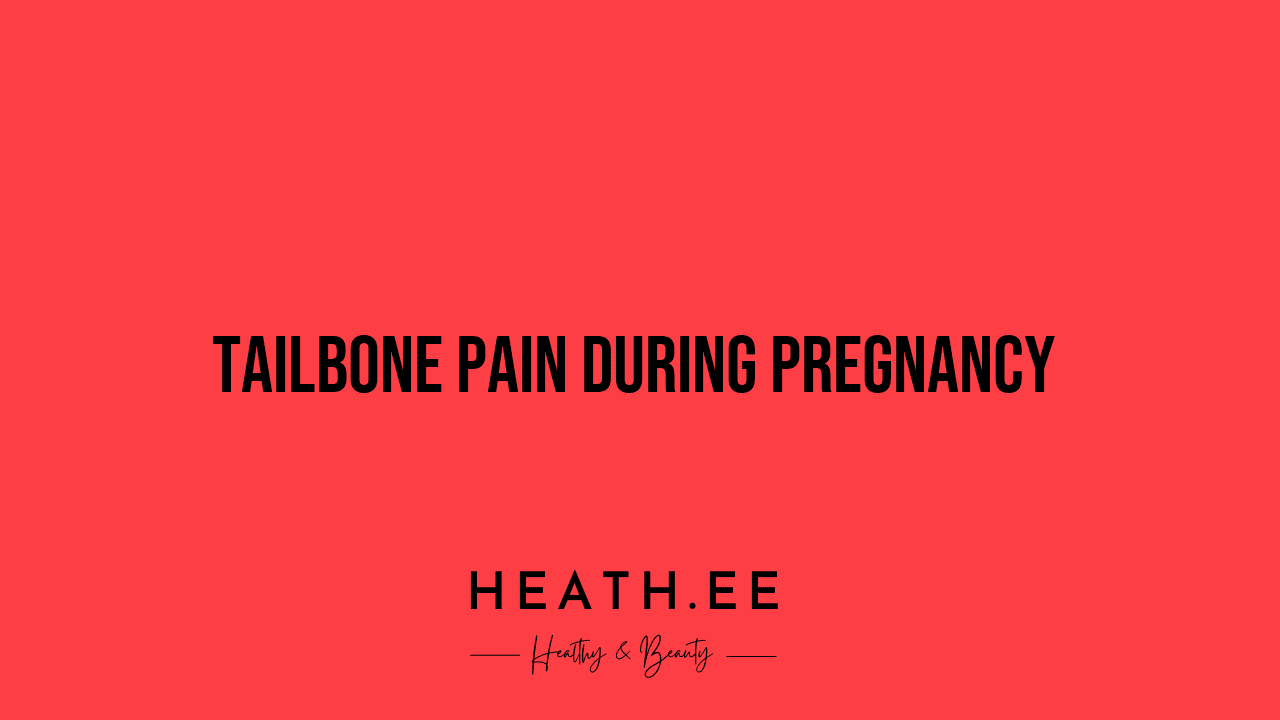Pregnancy is an exciting time for many women, but it can also be a time of discomfort and pain. One of the most common issues that pregnant women experience is tailbone pain. This type of pain can range from mild to severe and can be caused by a variety of factors. In this comprehensive guide, we’ll explore what tailbone pain is, what causes it, and how to manage it during pregnancy.
What is Tailbone Pain?
Tailbone pain, also known as coccydynia, is a type of pain that originates in the tailbone, which is located at the end of the spine. This type of pain is usually felt in the lower back and can range from mild to severe. It can be sharp and stabbing or a dull ache. In some cases, the pain may also radiate to the buttocks, hips, and thighs.
Tailbone pain is common during pregnancy and can be caused by a variety of factors. Some of the most common causes include increased pressure on the tailbone due to the baby’s weight, changes in the body’s center of gravity, and the loosening of ligaments and joints due to the hormone relaxin.

What Are the Symptoms of Tailbone Pain?
The most common symptom of tailbone pain is a dull ache or sharp pain in the lower back. This pain may worsen when sitting or when rising from a seated position. It may also be worse when coughing, sneezing, or after physical activity. Other symptoms of tailbone pain may include:
- Difficulty sitting for long periods of time
- Pain while walking or standing
- Pain when getting out of bed
- Pain when using the bathroom
- Pain when changing positions
What Are the Risk Factors for Tailbone Pain?
There are a number of risk factors that can increase the likelihood of experiencing tailbone pain during pregnancy. These include:
- Being overweight or obese
- Having a history of lower back pain
- Having a history of tailbone injuries
- Having a history of pelvic or hip pain
- Having a history of pelvic girdle pain
- Having a history of sacroiliac joint dysfunction
- Having a history of sciatica

How is Tailbone Pain Diagnosed?
If you are experiencing tailbone pain during pregnancy, it is important to talk to your doctor. Your doctor will evaluate your symptoms and medical history to determine the cause of your pain. They may also order imaging tests, such as an X-ray or MRI, to diagnose the source of your pain.
How is Tailbone Pain Treated?
The treatment for tailbone pain depends on the underlying cause. In many cases, conservative treatments can help manage the pain. These may include:
-
Rest: Taking a break from activities that cause or worsen the pain can help reduce symptoms.
-
Ice/Heat: Applying ice or heat to the affected area can help reduce pain and inflammation.
-
Medication: Over-the-counter medications, such as ibuprofen or acetaminophen, can help reduce pain and inflammation.
-
Physical Therapy: A physical therapist can help you learn exercises and stretches to strengthen the muscles around the tailbone and reduce pain.
-
Lifestyle Changes: Making changes to your posture, sitting habits, and sleeping position can help reduce symptoms.
In some cases, more aggressive treatments, such as steroid injections or surgery, may be necessary.
How Can I Prevent Tailbone Pain During Pregnancy?
There are a few steps you can take to prevent tailbone pain during pregnancy. These include:
-
Maintaining a healthy weight: Gaining too much weight during pregnancy can put extra strain on the tailbone.
-
Practicing good posture: Sitting and standing with good posture can help reduce strain on the tailbone.
-
Avoiding high-impact activities: High-impact activities, such as running and jumping, can put extra strain on the tailbone.
-
Wearing supportive shoes: Wearing shoes with good arch support can help reduce strain on the tailbone.
-
Practicing pelvic floor exercises: Doing pelvic floor exercises can help strengthen the muscles around the tailbone and reduce pain.
When Should I See a Doctor?
If you are experiencing tailbone pain during pregnancy that does not improve with conservative treatments, it is important to talk to your doctor. Your doctor may recommend further testing to determine the cause of your pain and to determine the best course of treatment.
Conclusion
Tailbone pain is a common issue during pregnancy. It can range from mild to severe and can be caused by a variety of factors. Understanding the symptoms, risk factors, and treatments can help you manage your pain and prevent it from getting worse. If your tailbone pain does not improve with conservative treatments, it is important to talk to your doctor. They can help you determine the cause of your pain and the best course of treatment.



